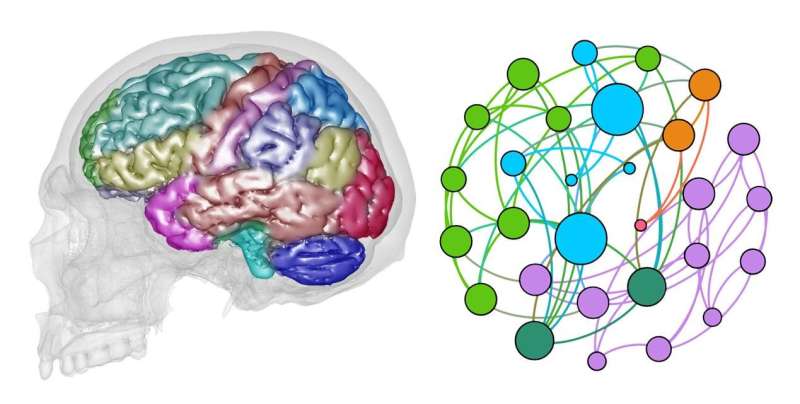Network analysis applied to the study of cerebral macroanatomy

The CENIEH researcher Emiliano Bruner has led a study which uses networks to investigate the geometric relationship among the principal regions of the cerebral cortex.
Network analysis is used in fields as diverse as economics, engineering and sociology to analyze relationships among elements. Emiliano Bruner, a paleoneurologist at the Centro Nacional de Investigación sobre la Evolución Humana (CENIEH) has just published a study in the journal Brain Structure and Function which applies this kind of analysis to the spatial relationships between brain regions.
In neuroscience, networks are often applied to analyze the patterns of neuronal connections, although in this study, conducted in collaboration with the researchers Borja Esteve-Altava, of the Universidad Pompeu Fabra, and Diego Rasskin-Gutman, of the Universidad de Valencia, they are employed for the first time to investigating the geometric relationships among the principal regions of the cerebral cortex.
"We have considered the position and the contact of the main brain regions investigated in human evolution to understand the possible influences which each region exercises on the adjoining ones, localizing areas particularly sensitive or fundamental to the spatial balance in the form of the brain," explains Bruner.
Evolutionary neuroanatomy
The spatial organization of the brain is the outcome of coevolution between brain and cranium, and it gives rise to connections in the anatomical structure of the cranial cavity. Some evolutionary changes in its form are due to cerebral variations, while others are prompted by changes in the architecture of the cranium. Nevertheless, in evolutionary neuroanatomy and paleoneurology, there is a tendency to interpret any variation in brain form as an adaptation to certain cognitive functions.
According to the results of the study, the temporal regions turn out to be particularly connected to the rest of the brain, and in general, all the posterior parts of the cortex are better integrated together than the anterior parts. The precentral gyrus, the convolution separating the prefrontal cortex from the rest of the brain, acts as a hinge between the two blocks. The frontal lobes are not very sensitive to the influences of the rest of the brain, although they are to the connections with the cranium (the face and frontal bone).
"This perspective on brain form in terms of the position and contact between its elements enables us to interpret the evolutionary changes within a broader context that takes into account the possible integration between local and global variations in the cortex and the cranium," says Bruner.
More information: Emiliano Bruner et al. A network approach to brain form, cortical topology and human evolution, Brain Structure and Function (2019). DOI: 10.1007/s00429-019-01900-1




















